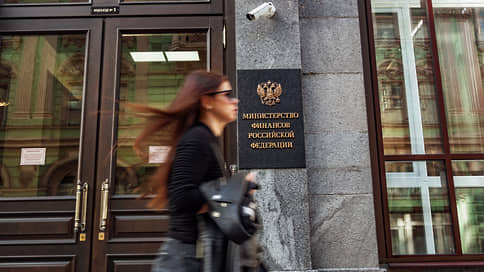Investors are waiting for OFZ with a variable coupon from the Ministry of Finance
[ad_1]

The pause in the placement of OFZs did not contribute to the growth in demand. At the last auction, the Ministry of Finance, following the results of three placements, attracted the minimum volume – 36.7 billion rubles. After a sharp rise in the key rate, investors are cautious about bonds with a fixed coupon, preferring papers with variable (OFZ-PK), but the Ministry of Finance is in no hurry to offer them. Analysts see risks in fulfilling the quarterly borrowing plan.
On August 23, after a short break, auctions were held for the placement of federal loan bonds (OFZ). The Ministry of Finance offered investors three OFZ issues at once: two with a constant coupon (OFZ-PD) and one inflationary (OFZ-IN). Demand for all issues amounted to a little over 60 billion rubles, as a result, the Ministry of Finance satisfied 61% of applications for 36.7 billion rubles, of which 16.3 billion rubles. fell on OFZ-IN. The final result is 36% less than the volume of funds raised in the previous triple auction, and the worst result for such auctions this year.
A week earlier, government bond auctions were canceled by the Ministry of Finance due to increased volatility in the financial markets caused by the decision of the Central Bank to hold an unscheduled meeting. August 15 Bank of Russia announced on the decision to raise the key rate by 350 bp. p. – up to 12%. This caused a negative reaction in the market. Last Tuesday, the RGBITR government bond index, calculated by the Moscow Exchange, fell to the level of 610 points for the first time since February, losing 0.6% over the day.
The market reaction to the decision of the Central Bank was fleeting, and by the end of last week the government bond index returned to the levels of the beginning of the week – 616.6 points.
The market recovery was facilitated by large redemptions of classic OFZs for 250 billion rubles. and inflation by 150 billion rubles.
According to the head of the DCM department of the corporate finance department of Tsifra Broker Maxim Chernega, part of the funds from the redemption was disposed of in the secondary market into long securities. “The increase in OFZ prices in the secondary market last week allowed the Ministry of Finance to return to the primary OFZ market after a week-long pause, but did not guarantee a large demand for long-term OFZ-PD,” said Alexander Yermak, chief debt markets analyst at BC Region.
Under the current conditions, according to analysts, it would be more logical to place OFZ with a floating coupon. Such securities are of interest to investors against the backdrop of rising interest rates or during periods of uncertainty. OFZs with a fixed coupon lose value, and therefore are not in demand among investors, even if the Ministry of Finance grants a higher placement premium. According to Andrey Kulakov, Head of the Fixed Income Analysis Department at Gazprombank, the premium to the secondary market for the nine-year OFZ-PD issue was 4 bp. on the longer OFZ-PD issue, it was higher and amounted to 9 bp. P.
Against the backdrop of accelerated inflation and increased inflationary expectations, OFZ-IN are more interesting for investors, Maxim Chernega clarifies, they are more specific and do not arouse very much interest in the market. There is demand for OFZ-PK, but the market is rarely spoiled with supply: since the beginning of the year, the Ministry of Finance has carried out only seven placements of such securities. “Perhaps, the Ministry of Finance knows something about the future monetary policy, since it is in no hurry to offer floating rate instruments to the market. If rates continue to rise, then an increase in the burden on the budget is inevitable,” he notes.
However, in order to fulfill its borrowing plans, the Ministry of Finance will still have to use OFZ-PK (floater) more actively.
According to Andrei Kulakov, in order to fulfill the quarterly plan in the remaining five auction days, the Ministry of Finance needs to raise 448 billion rubles, which is equivalent to 90 billion rubles. in one auction day. This is 15% higher than the average amount of funds that the ministry was able to raise in the third quarter. “In the near future, the demand for classic papers will most likely remain limited, and the emerging debt needs of the Ministry of Finance will be compensated by floaters,” says Dmitry Gritskevich, head of analysis of banking and financial markets at PSB. He does not rule out an increase in the supply of such securities towards the end of the year, when budget spending increases.
[ad_2]
Source link





